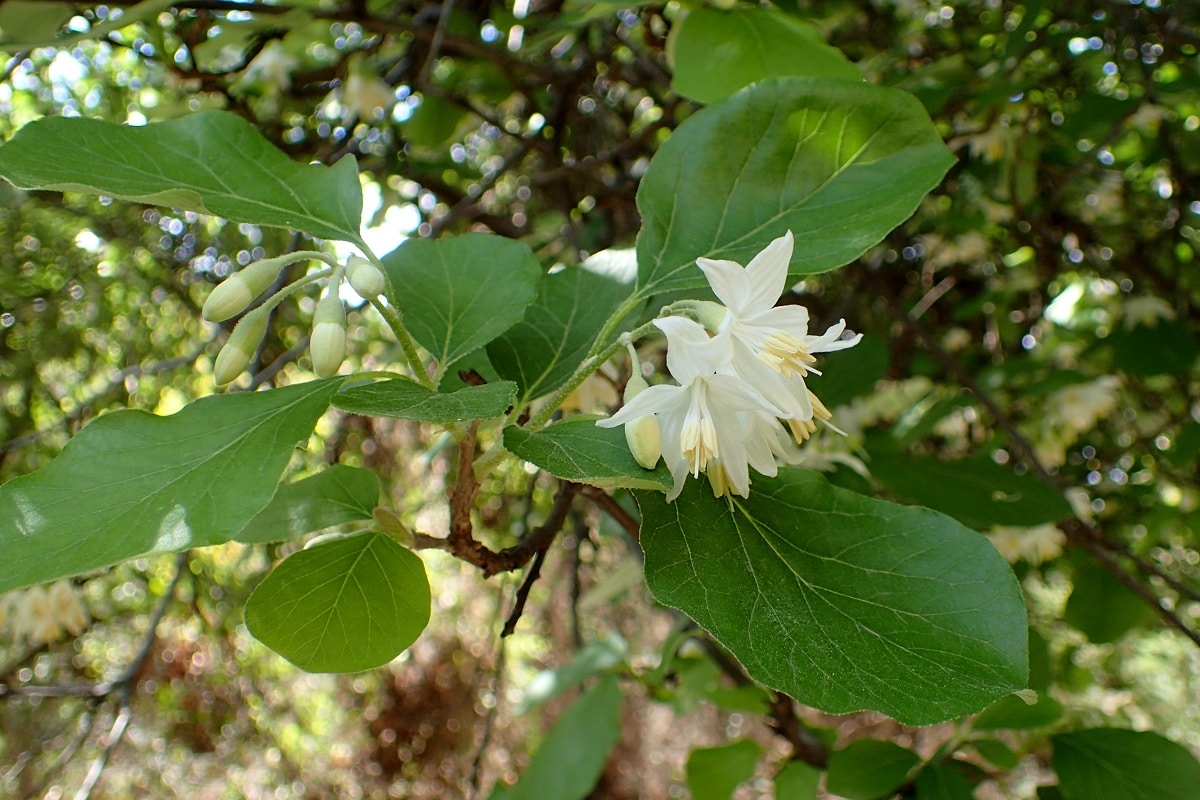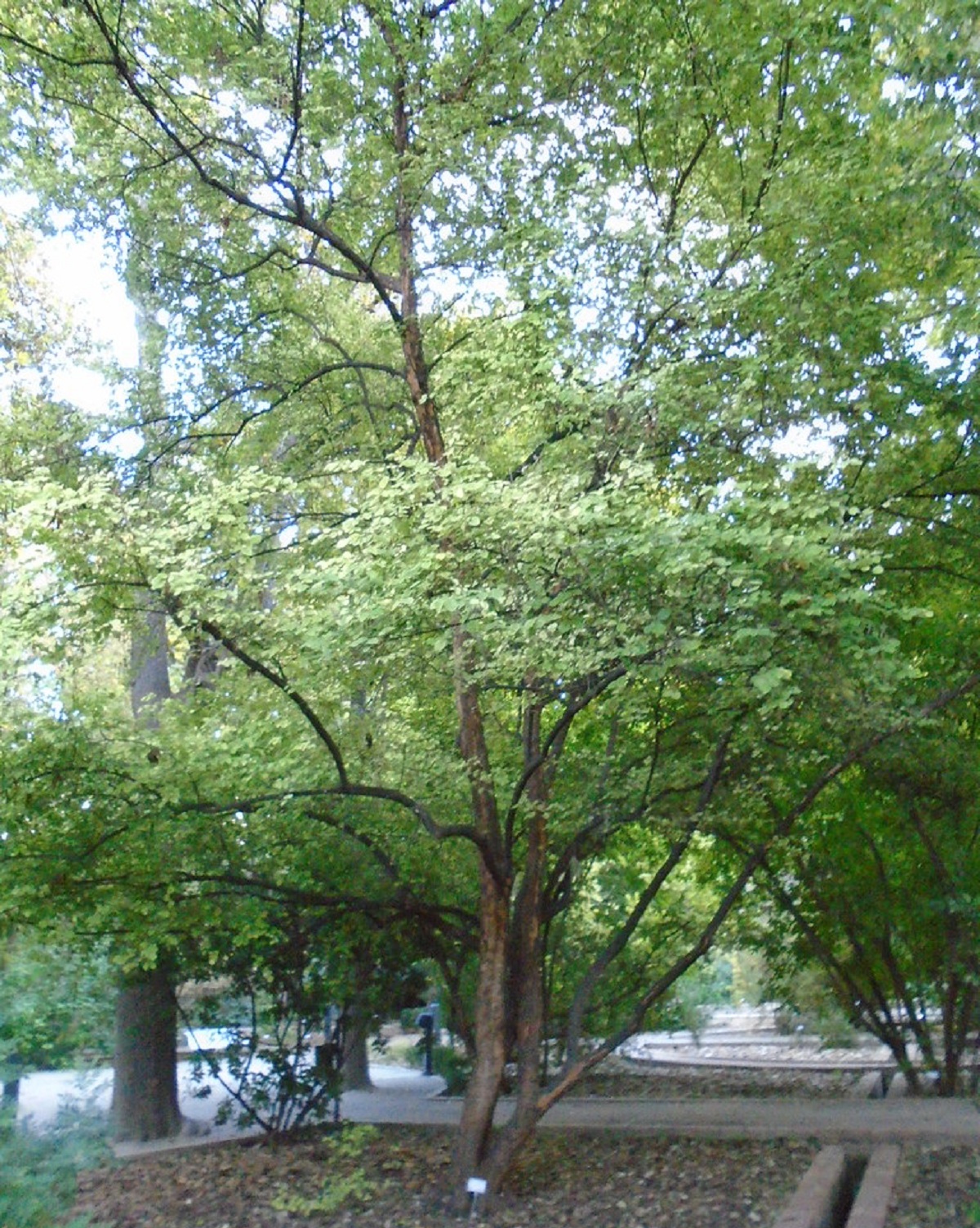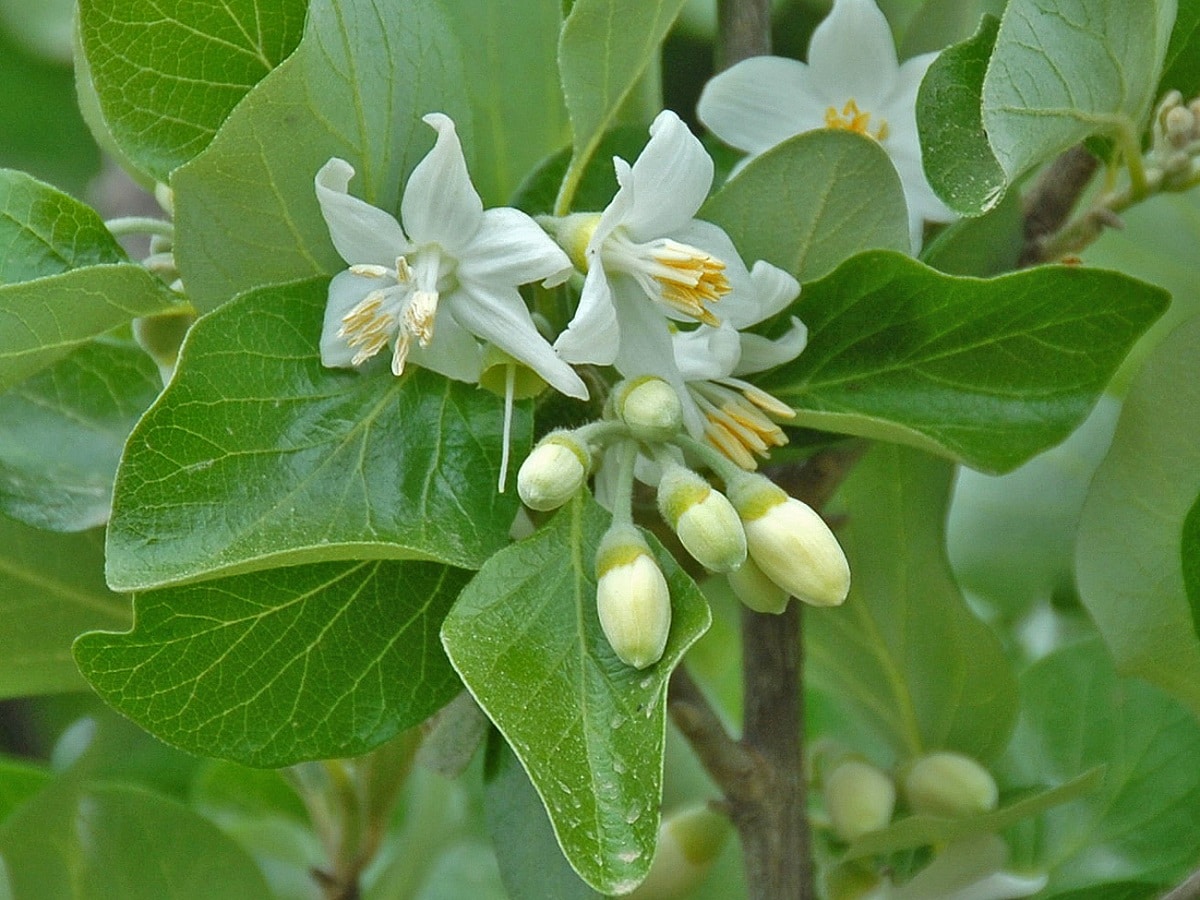
Today we are going to talk about a type of tree that is large in size and is used to decorate gardens in small groups. Its about Storaque. He is a popular man who has been known for a long time. Its scientific name is Styrax officinalis and that there are several types depending on some characteristics. It has a beautiful flowering that helps to improve the decoration in gardens and in open parks.
In this article we are going to tell you all the characteristics and care of the Storaque.
Key features

It is a tree that reaches almost 10 meters high and has oval-type leaves. These leaves are covered with a small whitish fluff that makes them characteristic. Usually they are trees that have a slower growth and that are developed thanks to the annual rainfall. In its flowering season we find that it develops white flowers that are grouped together. These groupings enhance the aesthetics of the tree during this period. It generates a kind of ovoid-shaped fruit that is one centimeter in diameter and has a seed inside.
With this tree a kind of aromatic incense is marketed which is what is called storache. When we make small incisions in the trunk we can see that it exudes a kind of liquid similar to resin. This liquid takes on a very aromatic smell when it dries. It also has other interesting medicinal uses such as expectorant, disinfectant and antiseptic use. It has been widely used to treat eczema, boils, and chilblains. In many brands of toothpaste they are added to have a relieving effect on oral conditions.
Types of storax

There are several types of storach according to its preparation:
- Pure storax: It is the one that is formed in the bark and the resin when drying is commercialized common and aromatic incense.
- Ceremonial storax: The resin that the tree secretes when cut is mixed with the blood of various types of insects such as the cochineal, the bee, ant and king beetles and dissolves in water. Once dissolved in water, it is mixed with oil and used to dye fabrics or to paint on the ground. The ancient Aztecs used it to paint their bodies when they went to battle. It also serves to dye the clothes of Aztec women who had been promised in marriage.
- Royal storax: It is a type of resin that the tree secretes when cut and is mixed with several species of crushed flowers. This mixture is used in the cosmetic industry and for dyeing fabrics. It is also used as incense.
The genus to which the Estoraque belongs, Styrax, which is made up of about 100 species of trees and shrubs. The vast majority of them have their origin in China, North America, Europe, Japan and the Middle East. Most of them have evergreen or deciduous leaves and always have oval shapes. The main color of the leaves is dark green on the upper surface and more greyish on the underside.
The flowers are usually bell-shaped and appear on long peduncles. The flowers are usually white and the flowering time is in spring or autumn, depending on each species. Some of its uses for decoration is form clumps and hedges to blend in with flowers and increase ornamentation. These flowers are grouped together and provide greater detail by contrasting with the dark green color of the and the velvety underside of the leaves. We can also find some isolated specimens to provide shade.
Storake care

It is a tree that will thrive well in semi-shade exposures and even in full sun. To be able to have it in full sun, it is necessary that it does not get too intense heat. Intense heat can damage flowers and leaves. Therefore, if the climate where you live is quite and warm, it is best to choose a semi-shaded area where the tree can rest from the solar radiation.
In order for it to have a good growth and development, the Storache needs a soil with a high content of organic matter and sand. Being in is the one that helps to have a good drainage. Drainage is essential if we want the roots of the tree not to rot with the storage of water. When we water or it rains, if the soil does not have the capacity to drain the water and it ends up accumulating, it will cause a rotting of the roots of the tree. In addition, the soil needs to be soft in texture and with an acidic pH.
Regarding irrigation, more or less It is necessary to do it every 10 if we grow it in hotter areas or in the sun. It is recommended to pay once a month using an organic fertilizer that is mixed with the irrigation water. This fertilizer will help to improve the amount of flowers it generates in the flowering season and to develop the tree in good condition.
Although it is a tree that needs pruning, we can do it if necessary. There are some forms in trees to increase ornamentation and pruning is used for this. What must be taken into account for correct pruning is that it is always carried out after flowering. In this way we get the tree to have a good flowering and they have not been damaged at this time. In the flowering season it needs a greater amount of nutrients and energy to maintain the flowers. If we do the pruning at this time we will cause some problems in their health and development.
Can be multiplied from seeds that we will enter in spring to take advantage of rising temperatures. It can also be sown in the fall or from cuttings in early spring or early summer when temperatures are higher and should not withstand frost. Let's not forget that it is a tree that, although it does not look good, does not tolerate frost much.
I hope that with this information you can learn more about the Estoraque.